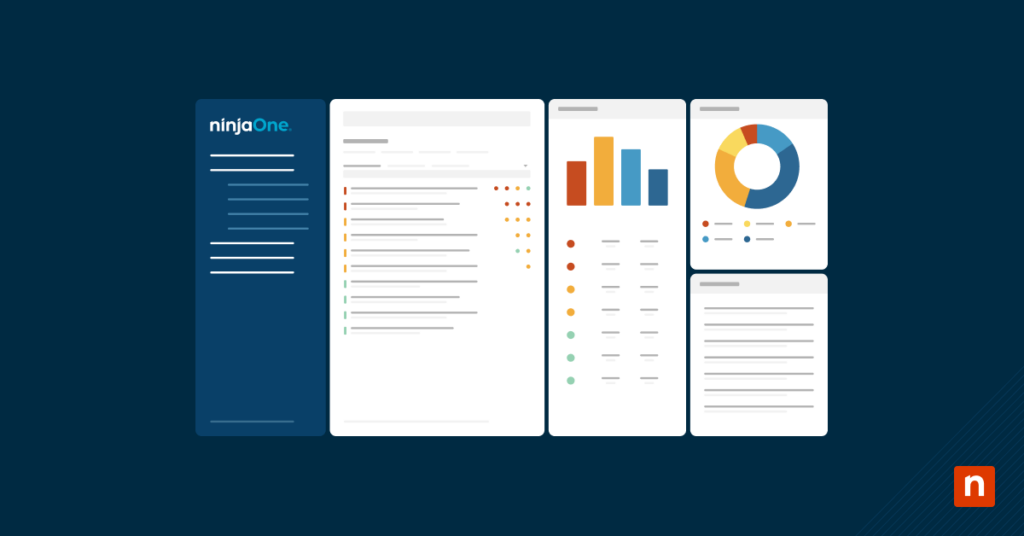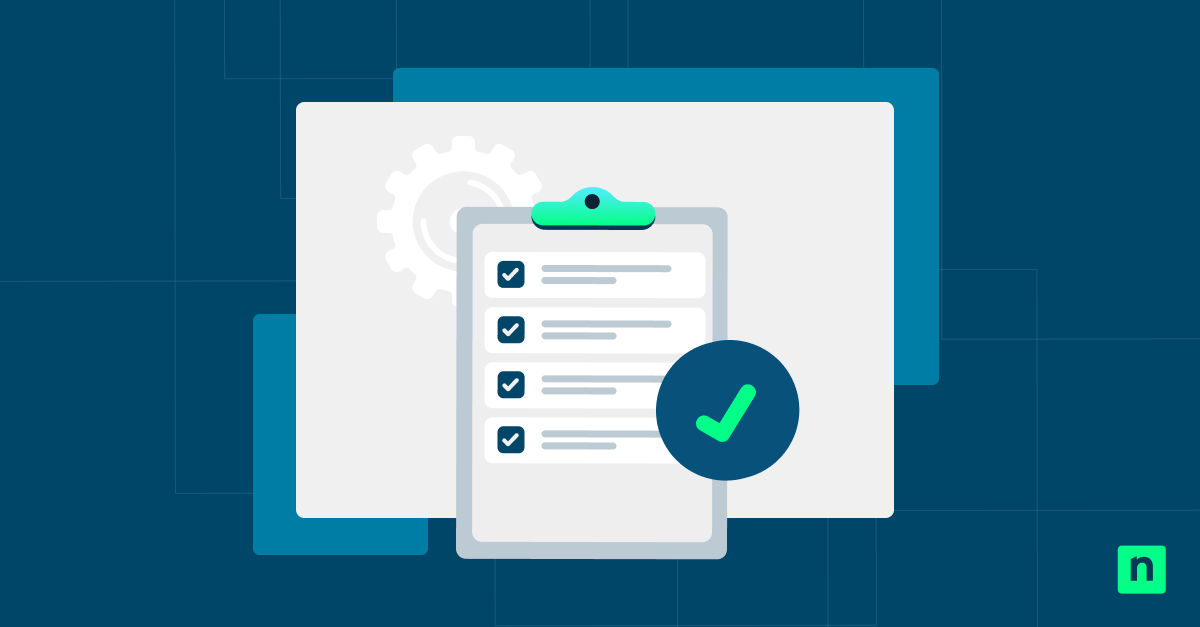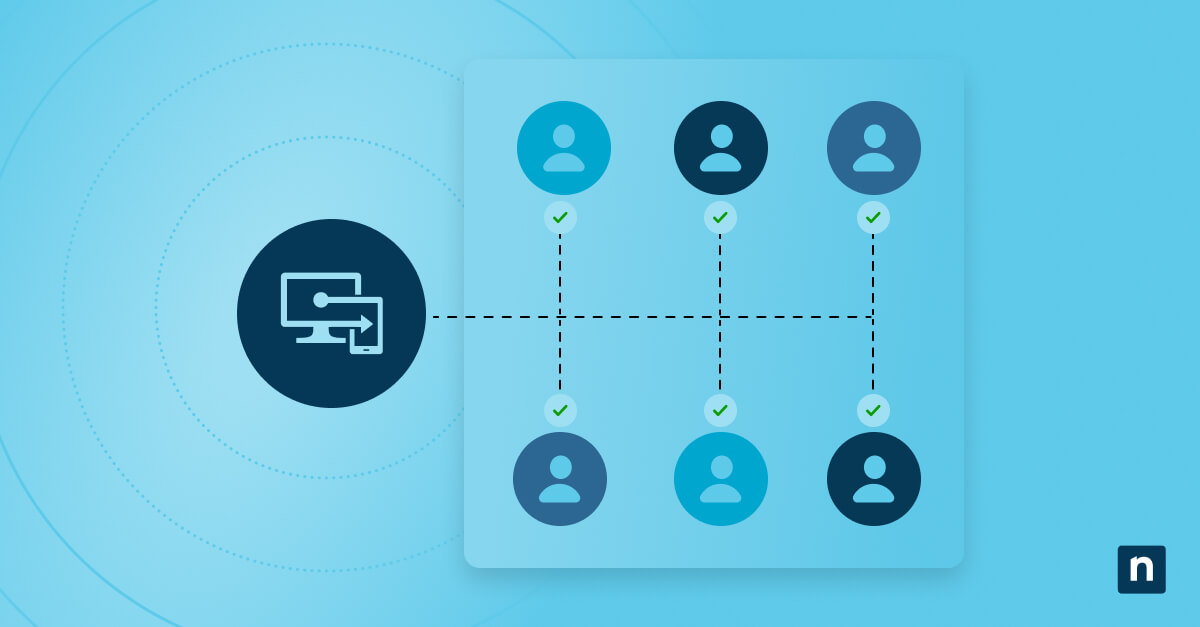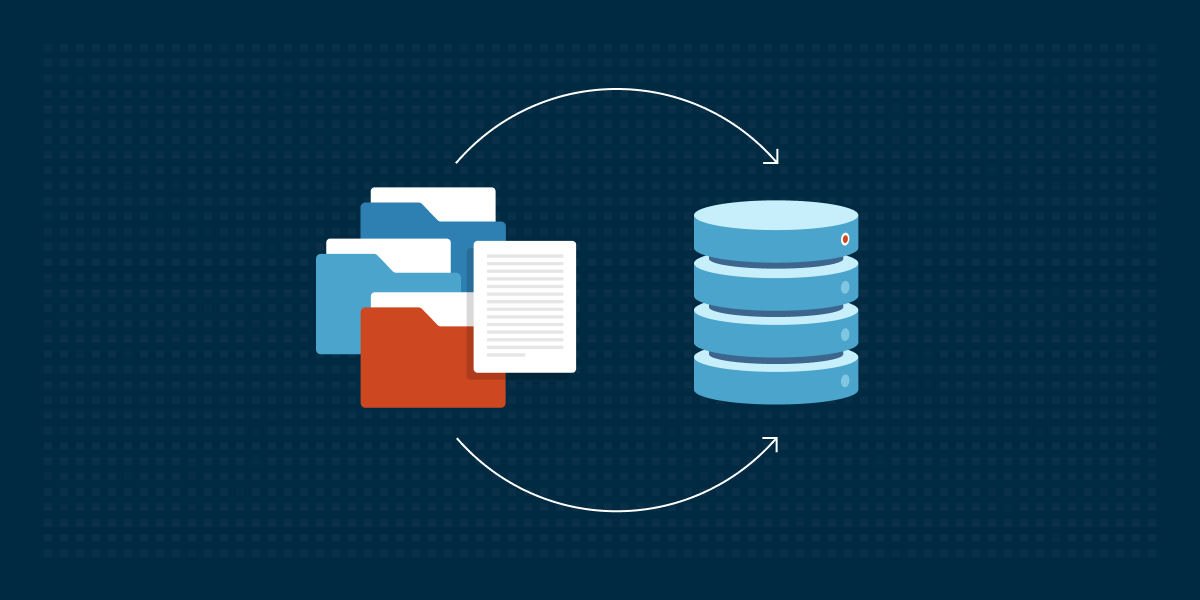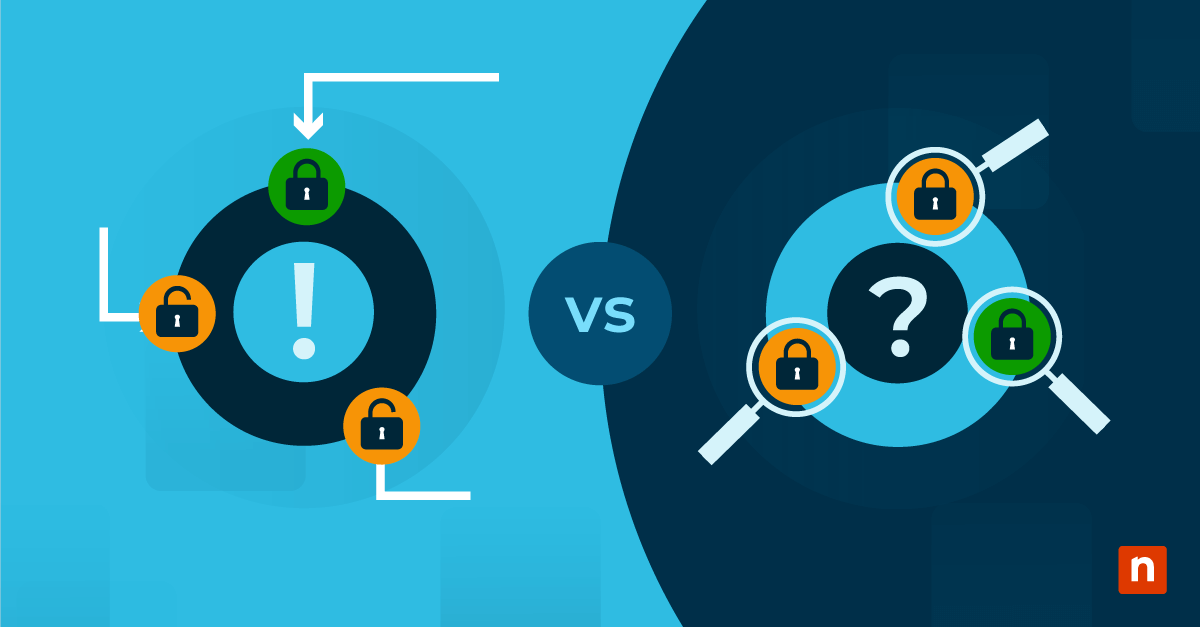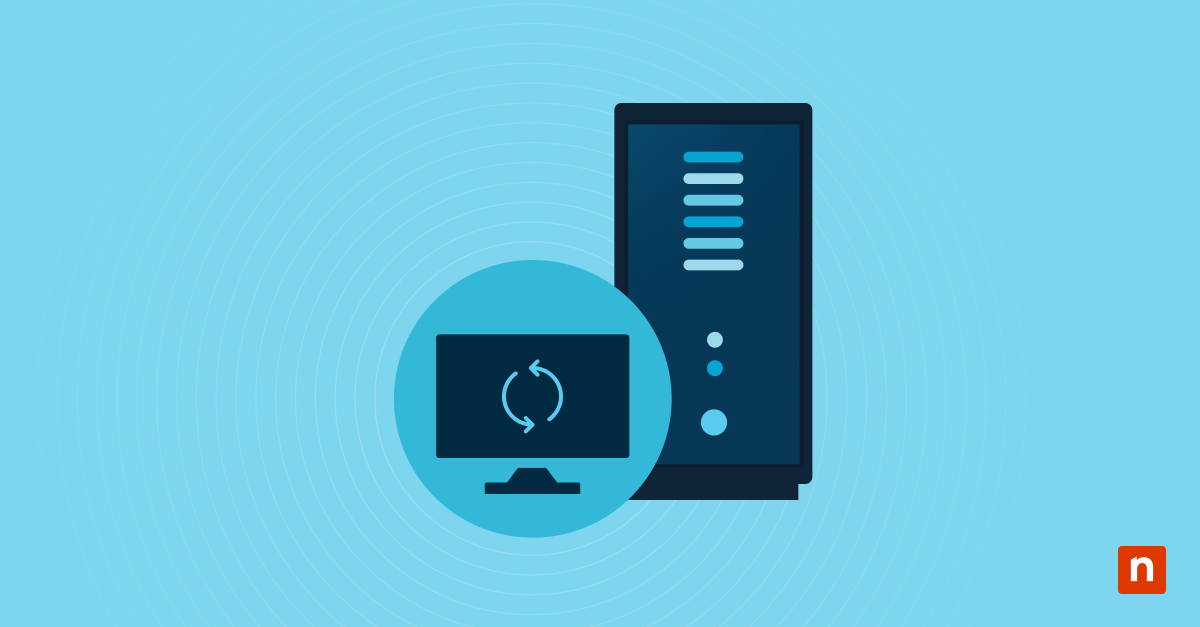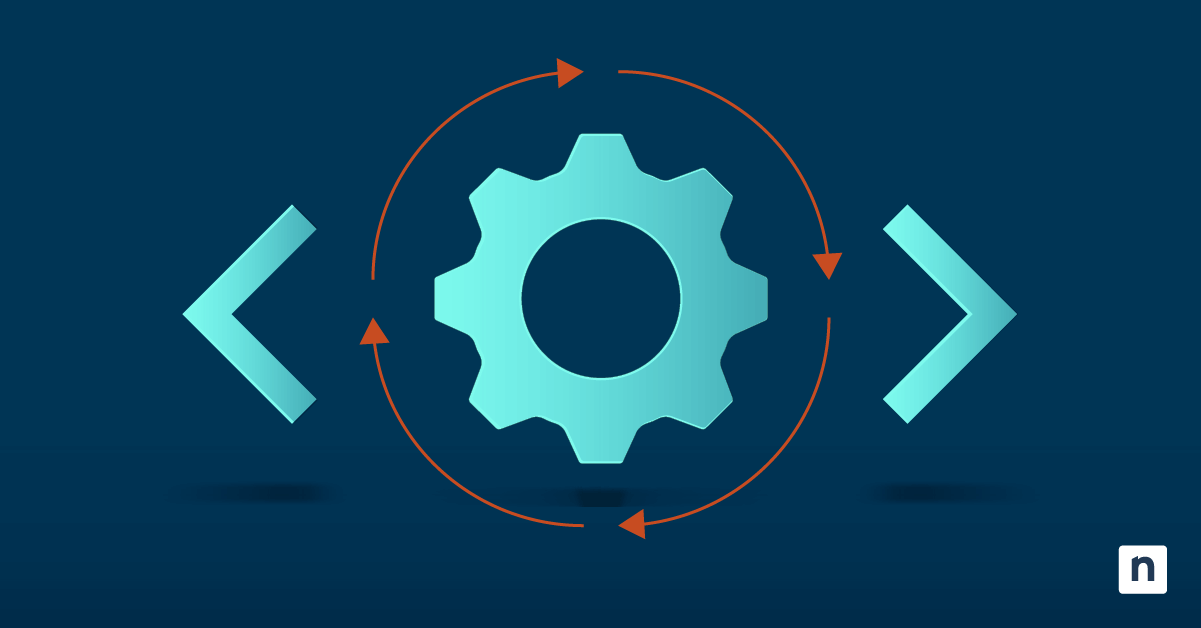Key Points
How to Use an RMM Platform as an MSP
- What RMMs Do: Remote monitoring and management (RMM) tools help MSPs monitor, manage, patch, secure, and support client endpoints across diverse environments—all from a centralized console.
- Core Capabilities: Top RMMs offer real-time monitoring, automated patching, remote access, backup integration, IT documentation, ticketing, reporting, and powerful automation tools.
- Benefits for MSPs: RMMs reduce technician workload, improve response time, enable proactive maintenance, and allow scalable service delivery that supports recurring revenue.
- Why NinjaOne Leads: NinjaOne’s RMM is intuitive, fast, fully cloud-native, and consistently rated #1 for automation, remote support, and endpoint management by users and industry reviewers.
Remote monitoring and management (RMM) software has become an indispensable tool for IT service providers. Numerous factors, such as the pandemic, the push towards cloud services, and shortages of IT staff, have increased the number of remote and distributed workers to a staggering degree, increasing the need for a consolidated way to view and manage IT environments. Learn all about RMM software, its capabilities, and why MSPs can’t run a successful business without it.
What is RMM?
An RMM solution is software designed for the purpose of remotely monitoring and managing technology devices in an IT environment and performing tasks to keep those devices running reliably and securely. RMMs can do this machine management in a location away from the actual environment, making it both possible and more efficient to provide IT support. Before RMM software, IT teams had no easy way to monitor the health of remote machines and take action before a problem occurred, and they often needed to physically attend to the machine rather than do so remotely.
With IT management solutions like RMMs, MSPs, and IT service providers are able to manage heterogeneous remote and distributed devices – desktop, laptop, servers, and other devices running Windows, Mac, and Linux OS, from a single view and single management environment. RMMs can know everything about each piece of hardware, everything installed on each machine, and everything that is running at all times. They do this by installing a software agent on each device that sends all this information back to a console that IT technicians view.
To better understand why RMM solutions have become a necessity for IT service providers, let’s learn about RMM software.
Who uses RMMs?
RMM tools are widely used by IT service providers, specifically managed service providers (MSPs). RMMs are the central tool utilized by MSPs to provide IT services to their clients. IT service providers can perform their jobs better when using an RMM solution because it enables them to monitor and manage heterogeneous device types centrally and remotely. MSPs need the ability to monitor and manage heterogeneous device types in different environments that are heavily distributed because they are often small IT teams managing many different organizations’ IT needs. On top of this, all these organizations have different device types, different expectations, different needs, and different use cases, so a versatile and flexible platform is required to address all these needs.
What is the importance of RMMs?
RMMs are critical to running a smooth managed service business because they enable the MSP to monitor and then manage all devices for each of their clients.
An RMM is an essential tool because it:
- Enables a holistic view of a customer’s IT environment
- Detects changes in the IT environment that can indicate an impending issue, allowing them to proactively investigate before it becomes a problem
- Enables the MSP to proactively patch, back up, and ensure antivirus software is in place to keep clients secure
- Streamlines these essential IT tasks and processes for efficiency
Looking for an RMM solution that offers all these benefits? Try out NinjaOne’s RMM
How do RMM solutions work?
There are multiple methods by which an RMM solution communicates necessary information from the endpoints back to the RMM software. NinjaOne’s RMM solution uses RMM agents, which are installed onto each endpoint. These agents have little bits of code that live on each endpoint to gather pertinent data and report back everything about the machine and how it’s functioning.
These agents do the work of tracking and recording endpoint information in real time. All the information is gathered and sorted into the RMM software’s dashboard or console that can be viewed at the organization or device level.
The history of RMMs
The development of the earliest computers happened around the 1950s, but it wasn’t until the 1990s that network monitoring and management solutions started to arise. Even then, it didn’t become the standard until much later. MSPs haven’t always had the luxury of such specialized software designed for monitoring and managing IT environments from remote locations.
Early on, monitoring systems for computers were pretty minimal and limited in what they could track. Machines usually had some type of internal monitoring available for memory and users, but when it came down to monitoring via software tools, the output was inconsistent and unreliable. Real-time information on a large scale was not possible, and only a small number of technicians had the right knowledge of how to diagnose and respond to these IT issues. Network monitoring tools have come a long way since then, thanks to the gradual development and advancement of monitoring systems.
The typical way MSPs kept track of all the IT information, issues, and associated remediations was to manually input it into a spreadsheet or database. MSPs also took care of IT issues reactively and followed the break/fix model.
Managed Service Provider Models: Break/Fix
The break/fix model of IT services essentially means that MSPs are paid for the problem they solve. Clients simply call them when there’s a problem with their device, network, or environment, and they fix it.
Before modern tools were designed, when a client ran into an issue, MSPs would have to physically go to the problem device to diagnose the issue. With the advent of remote access tools such as TeamViewer or Splashtop, technicians could now access a device from any location to troubleshoot the issue. This was done by installing a small agent on the remote machine that the technician could connect to at any time. Hardware issues often still require an on-site visit, however.
It’s one way of overseeing and recording what happens in an IT environment, but it’s not very helpful because they’re not getting information in real time–anything could go wrong and they wouldn’t know it. This method is slow, inefficient, and, frankly, ineffective as technology has advanced over the years.
The break/fix model is a cost-effective way for businesses to get the help they need when they need it but does not allow the service provider to proactively care for devices, potentially preventing the problem from happening before a call is needed
Furthermore, break/fix has some downsides for the service provider:
- The service provider is only paid when help is needed so monthly income can be very uneven
- The service provider doesn’t have input into how the client’s business is run and the technology decisions they make, especially around their security practices.
Along with the inefficient model of IT service, MSPs also ran into some fairly consistent issues or found that the current way of performing IT tasks and services was ineffective and could be improved.
Developers soon recognized the need for a software solution that enabled the monitoring and management of IT environments from a remote location, which led to the creation of RMM software. It was an answer to the inefficient MSP processes used before because it enabled MSPs to proactively manage IT environments more effectively.
What led to the rise of RMM software?
RMM software came about so that MSPs could manage distributed clients effectively. There are only so many customers MSPs can manage if they have to physically go to the environment, and it is difficult to manage many different clients without the help of RMM software. It was a natural progression that, as MSPs grew, they’d need software that allowed them to efficiently do their job and that would support the existing ecosystem. MSPs needed to scale their businesses beyond the scope of what they could do by physically traveling to the different clients and IT environments they manage.
The RMM platform came about so that MSPs could manage distributed clients effectively. There are only so many customers they can manage if they have to physically go to the environment, and it is difficult to manage many different clients without the help of RMM software. It’s a natural progression that, as MSPs grew, they’d need software that allowed them to efficiently do their job and that would support their existing ecosystems.
Having an RMM also allows MSPs to truly be service providers. Rather than waiting for something to go wrong and fixing it, MSPs could now monitor and take care of everything in the environment proactively. This enabled MSPs to now charge a monthly fee for the services they provided, rather than having to deal with intermittent revenue.
Now that we know what RMMs are, who uses them, how they work, and why they’re important, let’s dive deeper and touch on all the functions and capabilities of RMM software.
What information do IT service providers need to keep track of?
MSPs and IT service providers need to track a staggering number of attributes of each endpoint including:
- Machine OS, disk space, configurations, IP addresses, etc.
IT service providers need to know everything about the actual machine hardware in order to provide sufficient services. This includes the machine details such as machine manufacturer, OS version, disk space and RAM, configurations, and IP addresses – even the temperature of the machine can be important to monitor. - All software installed on the machine
Besides the OS, numerous software applications are running on the machine such as productivity suites like Office 365, security software like Okta, backup, AV, or email filtering, as well as dozens of business solutions so the user can do his or her job every day. For servers – both physical and virtual – there can be an equally broad number of software solutions running, all of which must be monitored constantly. - Information on users of the machine, what organization they’re a part of, where it’s located, and what other machines it is connected to
For example, MSPs will want to know which endpoint belongs to the CEO of a business and prioritize that over another employee that isn’t central to business operations. Device location is also another key data point to track, especially when it comes to remote work.
MSP Pain Points
MSPs and IT departments, across the board, face a lot of the same recurring issues. Some of the core MSP pain points include:
- The need to secure endpoints
- A breach because of unpatched endpoints
- Unreliable patching
- Don’t have the staff to do everything that’s needed
- Helpdesk drowning in tickets
- Too many tools; siloed tools and data
- Providing IT support to remote employees takes too much time
- Difficulty hiring and retaining technicians
- Lack of visibility into managed devices; can’t make decisions
An RMM solution helps MSPs by addressing all these major MSP pain points through the features and capabilities of the RMM software.
NinjaOne addresses these MSP pain points with an efficient and intuitive RMM platform. See how
What work is required to proactively take care of heterogeneous system environments?
RMMs serve as an interesting data repository. As an MSP, one of the hardest things to do when managing a fleet of heterogeneous agents is enforcing that heterogeneity. Using the RMM, service providers can make sure that all the machines they’re managing have the same set of software, the same set of monitors, and any other expectations that can be managed around making the environment more heterogeneous. Even, and especially, if they’re not using the same hardware across the entire environment, they can apply the same set of standards across all of the machines, which is important and essential for the best management of IT environments.
How do RMM platforms allow IT providers to care for IT environments?
1. Monitor and manage endpoints
The number one priority of RMM software is to help MSPs monitor and manage their clients’ endpoints. This enables better visibility and more control over the IT environments they are in charge of maintaining. The ability to monitor and manage in a software solution is both helpful and significant.
Monitoring software in RMM
The installed agents on endpoint devices can see all the software that’s on a machine. MSPs can track and monitor which specific software systems and applications are installed on the device, view how much disk space is being occupied and how much is still available for use, and determine whether an endpoint is healthy or functioning well. The 24/7 monitoring information that RMM software produces also allows them to always have eyes on the IT environment’s endpoints.
The type of information MSPs monitor often depends on their size. A smaller MSP might monitor every workstation for low disk space, so they can be notified and actively work to remediate the issue on any device that is affected. A larger MSP, on the other hand, probably has way too many workstations and may only monitor the servers for low disk space.
Let’s say that a client’s Exchange Server is not running, or some software is not working. If the MSP can find out about the issue before the end user discovers the issue, that gives the MSP a leg up on remediating the issue in a way that will satisfy the client. Even if both the MSP and client discover the issue simultaneously, the notification sent by the monitoring software can still give the MSP a heads-up before the client calls in. Monitoring is all about knowing what’s going on with the customer before the customer knows, or at least at the same time, so they can always stay a little ahead and proactively manage and maintain the IT environment.
Management software in RMM
Endpoint management allows MSPs to provide proactive management and maintenance for their clients’ machines. The RMM’s ability to access endpoints at any time of day enables quick and speedy remediation of machine issues. This way, they can support the good health and proper functioning of machines rather than always having to spend their time attempting to resolve issues, especially ones that have already been identified by the client.
Management software also works to manage their endpoint devices at scale. Whether it’s installing AV software, enforcing all devices to have a certain screensaver, ensuring that the settings are set to whatever they need to be, or that the right software is installed on the machines, RMM gives MSPs the management tools they need to complete these tasks.
There are a whole host of use cases for endpoint management, including:
- Restricting or enabling access for an endpoint device
- Changing device settings and configurations
- Installing programs and applications on devices
- Disabling devices or remotely wiping device data
- Deploying changes across all or a subset of devices
- User and password management and control
2. Patch software on the machines
Patch management is a critical process for IT environments to support the security, continuity, and longevity of IT assets. It involves maintaining a client’s IT infrastructure through tracking, testing, and applying patches to software. Patches are applied to operating systems, applications, programs, and software, and can be anything from updating software security or fixing technical issues to adding new features to a program.
From a security perspective, patches are critical because they close up vulnerabilities that a hacker could have potentially accessed for an attack. They need to be applied as quickly as possible, which is where the MSP comes in. MSPs are responsible for making sure that machines are patched both rapidly and efficiently to secure endpoints and protect them against outside attacks.
Since RMM software already enables complete visibility and easier management of endpoint devices, MSPs can easily apply patches to any of their endpoints through the existing connection. When a patch is available for a particular software, using RMM software’s patch management features, they can install it on several machines at once – whether for the OS or third-party applications.
What are the key functions of patch management using RMM software?
The key functions of patch management software on an RMM are:
- Identifying available software patches or fixes
- Testing patches to ensure they are functional and won’t break a system
- Deploying patches to the endpoints in an IT environment
- Installing patches onto the endpoints
- Fixing any issues that arise after patch installation
- Ensure patch compliance on all devices
RMM software also helps to streamline the patch management process and apply patches to endpoints at a large scale. NinjaOne’s RMM solution is cloud-based and agent-deployed, which makes patching endpoint devices possible through just an internet connection.
Is your patch management process inefficient or tedious? NinjaOne provides automated patch management software to streamline patching.
3. Protect the endpoint machines
Endpoints are one of the first points of attack for cybercrime. Endpoint security is much easier when MSPs have complete information about and control over endpoint devices. RMM software also allows them to take certain actions to protect and secure their endpoints.
Some of the specific actions MSPs can take include:
- Using AV software and EDR solutions
- Encrypting the drives
- Backing up systems
- Password management
- Device approval
How does backup software integrated into an RMM platform help MSPs protect endpoints?
Data backup and recovery is an important IT practice for any and every business. As organizations have gone through a digital transformation, their business work, operations, and data now exist in a digital form. This is great for the continual growth and advancement of these organizations, but it also means that there’s a high risk of experiencing a breach or cyberattack. That is why the backup of digital systems is so increasingly important. It acts as a safety net for the business, first, but also as a safety net for the MSP as well.
There are plenty of other standalone backup software solutions that MSPs could select to back up client data and machines. However, since MSPs must manage entire IT environments from the infrastructure down to individual endpoint machines, it’s more beneficial to combine features into a single software solution. Many RMM platform vendors, including NinjaOne, provide backup software and associated features to simplify and streamline the backup process.
4. Group and filter machines into categories
Groups and filters are not necessarily used individually just for the sake of dividing up machines. They are typically used more as a means to an end, to enable MSPs to do something to a specific set of devices. This may include how they apply certain monitors, or being able to group or filter machines that have a particular service/software installed that they want to monitor.
How do groups/filters in RMM software help MSPs?
Dividing endpoint devices into various groups gives MSPs multiple capabilities that they otherwise wouldn’t have. Groups and filters give MSPs the ability to:
- Perform tasks on machines at scale
- Get better control and visibility of devices
- Target a certain set of devices
An RMM has the ability to group machines in many different ways, and there are multiple mechanisms RMM software can use to group the devices.
3 ways to group/filter endpoint devices in an RMM:
The three mechanisms that Ninja uses to sort devices are by organizations, policies, or dynamic search groups:
1. Organization
An MSP can have thousands of devices they’re managing between various organizations, and they need to be able to keep track of and distinguish between those organizational devices. One of the simplest ways to group devices is by which company or organization they belong.
When an issue is detected on one of the endpoints an MSP manages, it’s important to know which organization the device belongs to.
2. Dynamic Search Group
Using dynamic search groups, an MSP can create dynamic groups of devices based on any characteristic of that device. This could be anything from the OS build number, OS type, location, software being installed on, and more.
3. Policy
Grouping endpoints by using policies could be considered one of the most flexible methods of grouping devices. MSPs can apply a policy to a number of devices, depending on how they’d like to group them. Those devices become a group inherently because they’re all managed by the same policy.
Policies can be applied based on a number of conditions, such as:
- User behavior (account locked, user permissions elevated)
- Servers in need of a restart
- Custom monitoring
- Disk errors
- Backup failures
- Server offline
- Critical application failure (Exchange, SQL. LOB app)
- Restart services (DNS, W32time, Netlogon, MSSQL)
- End-user device reboots
- Installing missing applications
Check out this guide to learn how to drive automation and efficiency with NinjaOne policies.
5. Remote access
Physically going to a device to access the individual machine dates back to the original way that MSPs provided services. Fortunately, since then, remote access has been developed. Remote access is the ability to access individual endpoints from a remote location. This feature enables MSPs to provide services from wherever they are located, cutting out the travel time to and from an IT environment that used to be required. Instead, MSPs require a single click and a couple of seconds to gain access to the target endpoint.
Some of the first remote access solutions were developed in the mid-1980s, but the more recent and relevant solutions, such as TeamViewer or Splashtop, were developed in the early 2000s. Many RMM solutions may integrate with software such as these to provide reliable remote access.
How does remote access work with an RMM?
Remote access enables MSPs to provide remote support for a variety of reasons, whether it be routine maintenance of devices or responding to a request given via a helpdesk ticket. MSPs can give online technical support to end users and end devices. It can also be used for servers, which is essential because of the far-reaching effects servers can have on the environment.
Remote access is fundamental to endpoint management because, though agents send important device information and metrics, MSPs wouldn’t be able to do anything about the information remotely unless they could somehow access the device.
What does remote access allow MSPs to do?
With the help of a remote access solution, MSPs are able to gain control of an IT asset and perform the right maintenance tasks that are required. To properly manage a device as an IT service provider, it’s important for a remote access solution to give full access to the endpoint device. Without that capability, limitations will be set and service providers will undoubtedly run into roadblocks that prevent them from doing their job well.
The various types of remote access available allow MSPs to access varying levels of control. Some of the most common remote access protocols that give full access are virtual private network (VPN), remote desktop protocol (RDP), and virtual network computing (VNC).
6. Documentation
The documentation capability of an RMM solution helps MSPs to keep track of multiple types of IT information, whether it’s standard operating procedures (SOPs) or passwords and credentials. It provides a central location to create, organize, and store all these details, which makes it easier to find the information later on.
One common use for IT documentation is to record standard ways of dealing with problems, whether they’re common or extraordinary. MSPs don’t want to have to reinvent the wheel every time a problem comes up, so they can document how to respond to a particular issue and store it in the RMM for reference.
Why is documentation in RMM software important?
Because MSPs have so many things to keep track of, it’s extremely beneficial to store some of that information within the software. IT documentation on RMM software gives technicians and admins a convenient and easily accessible place to find the information they require for whatever task they’re trying to accomplish.
The RMM also keeps the information safe in a repository. For example, if an MSP needs to obtain a password to gain access to a device or program, they can grab the password but it remains encrypted. This helps support security and confidentiality within the MSP.
MSPs can use other collaboration software to record and document essential IT information, but that also means it’s another tool added to the IT tool stack. Overtooling can lead to unnecessary increased costs, more complexity in management, and other downsides. Check out The Pitfalls of Tool Sprawl to learn how MSPs can achieve more with fewer tools.
What are the 5 types of IT documentation that can be stored in an RMM?
The five categories of IT documentation that can be recorded in an RMM fall under are:
- Device: machine details such as the OS and software on the device
- Environmental: network maps and how devices interact with or rely on each other
- Process: SOPs and associated details such as what the steps are and who to get involved
- Credentials: usernames, passwords, and MFA information
- Incident response: how to respond when a breach occurs
7. Create tickets
RMMs can also function as a helpdesk for technicians and enable users or MSPs to create tickets for a variety of reasons.
The two main reasons that tickets are created are if:
- A user reports a problem or requests something
- Something in the RMM is broken. For example, if one of the automatic monitors fails, a ticket is created to notify the MSP that it has failed.
However, MSPs can use tickets for practically anything to keep track of a given task and ensure it gets done. Some may use ticketing as a “structured to-do” by recording what needs to be checked or accomplished, and resolving the ticket once it is complete.
How is ticketing incorporated into RMM software?
Ticketing, or helpdesk, software, and RMM software go hand in hand. To effectively manage and support all endpoints and their users, MSPs need to know what’s going on in the IT environment at all times. Then, when an issue occurs, they won’t be caught off guard and be better prepared to perform whatever tasks are required for the remediation of an issue or to resolve a ticket.
Since RMM software is already actively monitoring and managing endpoints, when a ticket is created, it can automatically include live health and performance data plus incident context to enable faster remediations. All the necessary information should be readily available, lending to a potentially quick resolution. Ticketing software and RMM software work together to support the good health and optimal performance of the entire IT environment.
Do RMMs integrate with PSA software?
Professional Services Automation (PSA) software helps IT service providers manage their business processes in a dedicated solution. One of the features of many PSA solutions is ticketing and ticket management, along with time tracking for billing, all client information, and many other helpful features.
Many RMMs, including NinjaOne, integrate with PSA software. By using PSA software, MSPs can automate or better manage central business processes so that more time is available to dedicate to providing excellent IT services.
8. Generate reports
Reporting is important to provide the intended person with a comprehensive view of certain components of the overall data. The RMM furnishes reports with rich data on how the RMM was used and the tasks that were completed using the software.
What can RMM reports be used for?
RMM reports are designed to provide information about the workings and warehousing in the RMM to whoever needs it. Possible scenarios MSPs could utilize RMM reports include:
- An executive who is trying to make decisions
- A customer verifying that an MSP is doing the work they say they’re doing
- An internal auditing team for security purposes
- A technician trying to locate pieces of software
At the end of the day, RMM reporting is about taking the data that’s been collected with the RMM and presenting that data comprehensively and in a way that is actionable. RMM reports enable business decisions, emergency responses, and even just finding target data that’s been previously collected in the RMM software.
How does RMM reporting help MSPs?
Reports are important for MSPs to show all the work they are doing and the problems they’re avoiding to ensure the environment runs smoothly.
On the business side of things, RMM reporting helps MSPs to show their clients what they’ve done for the money the client is paying them. If a client’s environment seems to run into very few issues, the client may be wondering if it’s really worth it to continue paying an MSP for IT services. The MSP can generate a report detailing all the work that’s been done to keep the environment secure and running well.
Reports can show information such as:
- Patching efforts that were completed
- The installed software on endpoints
- New machines that were set up
- All the calls an MSP took
Reports also assist MSPs in identifying problems and quickly resolve them. Let’s say that some machines in an IT environment are experiencing problems with a particular application, such as QuickBooks. The MSP could create a dynamic filter for all the machines running Quickbooks and generate a report to see all the applications running on those machines. Maybe one of the other applications is causing a problem with the Quickbooks application, or a recent Quickbooks patch is causing the application to malfunction. Regardless, an RMM software report can help the MSP find machines with common applications or settings so that the problem can be more easily diagnosed.
Automation in RMM Software
All the features of RMM software mentioned above can be automated. One of the most treasured capabilities of RMM software is its automation capability. It enables MSPs to automate repetitive and time-consuming device management tasks. In fact, automation is what allows MSPs to continue growing and scaling up their business and is one of the keys to MSP success.
Examples of RMM tasks that can be automated
- Identifying, applying, and updating patches
The machine, agent, and RMM can keep track of what patches need to be done and deploy them automatically. - Software installation
The RMM can monitor devices to ensure that if somebody uninstalls critical software, such as AV, it will automatically reinstall it - New machine set up
MSPs can automate the correct device settings, and installation of software products, and give the user the right level of access. - Managing backups
RMM software can automate the backup of various systems, and if a backup fails, it can automatically send a notification and try again at a later specified time.
NinjaOne gives you the ability to automate these endpoint tasks and more.
How to customize RMM automation as an MSP
There are two main methods MSPs use to customize and target automation in RMM software. The first is to use custom scripts, which give MSPs flexibility in determining the parameters and inputs that they need for a specific action.
IT service providers also achieve targeting in automation by using groups, policies, or selecting individual devices and applying a policy. If certain devices need special care, they can set the options to override the policy.
For a broader look at why MSP automation matters, the key areas it covers, and how to build an effective strategy, check out The Complete Guide to MSP Automation.
Provide better IT services with NinjaOne’s RMM software
NinjaOne’s RMM software helps MSPs deliver more efficient and effective IT services to their clients. It contains all the features listed above, with even more capabilities not specified, to provide service providers with a central hub for all things related to providing the best remote monitoring and management services. Visit our RMM Platform FAQ to learn more about NinjaOne’s RMM solution, watch a demo to experience the RMM software, or sign up for a free trial today.

